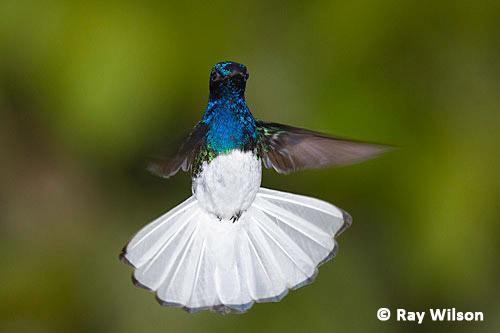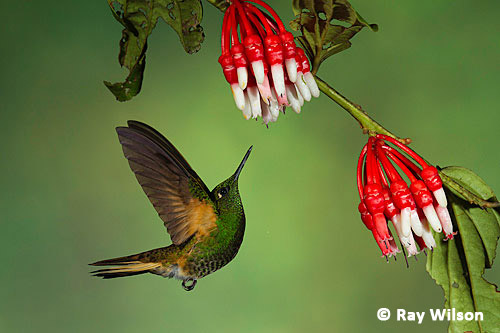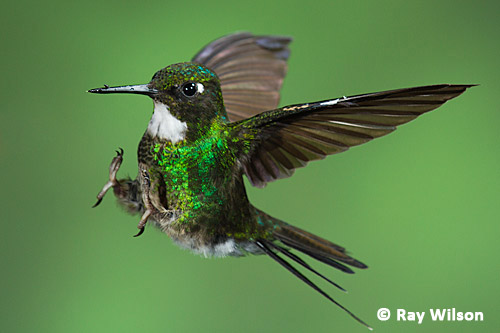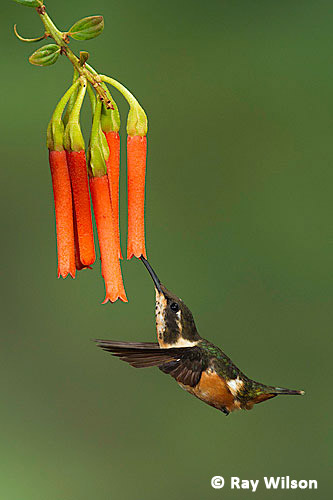Text and photographs copyright 2013 by Ray Wilson, all rights reserved
When Florian wrote a feature on my wildlife photography in his “Photo Treasures” section, he also invited me to write a few articles on wildlife photography as a guest contributor. At that time, I was extremely busy with sorting and editing the 28 000+ photos I’d taken on a 33-day trip to Ecuador but, now that its almost done, I thought I would start my first article where Florian left off and take a closer look at one of my favourite families of birds: the Hummingbirds.
So why the interest in hummingbirds?
It is hard to decide where to begin. They are fascinating in so many aspects of their biology... The Troichilidae, which is the scientific name for the family to which the hummingbirds belong, is an incredibly diverse family with 314 species recognised by the recently completed Handbook of the Birds of the World, making it the second most species rich family in the world behind the Tyrant Flycatcher (Tyrannidae). They are found exclusively in the Americas, with the vast majority living in Central and South America and only a handful of species venturing into North America. But it is not the sheer number of species that draws most people to hummingbirds. It is their extreme mastery of flight and their beautiful iridescent plumage. Through a number of unique anatomical adaptations, which allow them to generate lift on the upstroke as well as the down stroke, hummingbirds not only have the ability to hover for prolonged periods with millimetre precision, but are also the only birds in the world capable of flying backwards.
It is hard to decide where to begin. They are fascinating in so many aspects of their biology... The Troichilidae, which is the scientific name for the family to which the hummingbirds belong, is an incredibly diverse family with 314 species recognised by the recently completed Handbook of the Birds of the World, making it the second most species rich family in the world behind the Tyrant Flycatcher (Tyrannidae). They are found exclusively in the Americas, with the vast majority living in Central and South America and only a handful of species venturing into North America. But it is not the sheer number of species that draws most people to hummingbirds. It is their extreme mastery of flight and their beautiful iridescent plumage. Through a number of unique anatomical adaptations, which allow them to generate lift on the upstroke as well as the down stroke, hummingbirds not only have the ability to hover for prolonged periods with millimetre precision, but are also the only birds in the world capable of flying backwards.
Hovering, as a mode of flight, is very energy demanding and most hummingbirds need to consume about 1.6 times their body weight in nectar every day, supplemented by hawking for small insects to boost their protein intake. Even at rest, the hummingbird’s metabolic rate ticks along at a mind-bendingly fast rate. For example, their resting heartbeat is thumping away at between 300-500 beats per minute, rising to 1 000 beats per minute during bouts of hovering and aggressive display. To pump enough oxygen into their bloodstream to fuel such a high metabolic rate, they have to breath extremely quickly too, taking around 200 breaths per minute (in comparison, humans have an average resting heartbeat of 60-70 beats per minute and breathe 14-18 times a minute).
Obviously, if you are going to spend a large portion of your life hovering, keeping your weight down to a minimum is advantageous and the hummingbirds have taken miniaturisation to an extreme. The woodstars are a good example: At only 4.5-6 cm in length, measured from the tip of their bill to the tip of their tail, and weighing only 1-2 g, they are no bigger than many of the large bees that inhabit tropical South America. With their wings beating at an incredible 60-80 beats per second, their mode of flight is also extremely reminiscent of a large bee.
One last fact: recorded flight speeds of hummingbirds are among the fastest of all birds. In level flight, Green Violet-ears have been measured at 96 kph, almost 50% faster than the fastest homing pigeon! But even that pales into insignificance to the Ruby-throated Hummingbird of eastern North America, which reaches a staggering 200 kph (125 mph) during its display flights!




